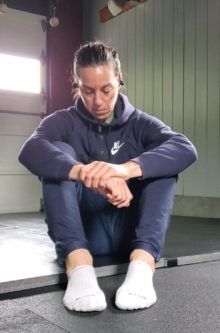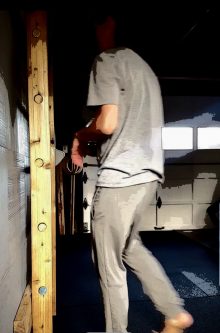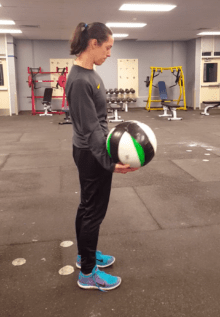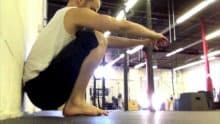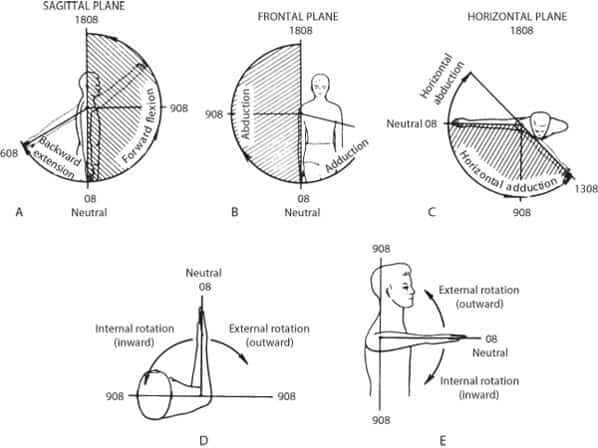Alternative Title: Describing the Avoidant Half I have been writing about asymmetries for some time. Whether it be determining the up leg from from down leg, or the pitfalls of detorsioning the system, I continue to find and… Read more ›
Asymmetry. Up Leg. Compression. Push Down. Space. Rotational Organization. These all describe the physics of one half of the body accepting load, and one half of the body avoiding load. The first time I wrote about this, I referred to… Read more ›
The first post in this series asked if a pigeon toe was friend or foe. It is certainly a strategy, an adaptation that has a purpose. For me, my half with the pigeon toe also carried my biggest problems, particularly… Read more ›
Oh, the mighty pigeon toe. Such a strange little insurgent, and yet, it exists peacefully all around us. Where does it come from and how does it form? Does it afflict one leg or both? Is it the tibia or… Read more ›
Part 1 of this series explained how knee should not be used as a load-bearing joint. Part 2 showed how pressuring the knee can help build safety, alignment, and desired force at the desired time. This third and final segment… Read more ›
Torsion. We all have it: a particular line of twist running through our carriage, gripping us in a certain way and keeping us upright. Each fold and joint tells its story, whether you realize it or not. It’s how we… Read more ›
Part One looks at identifying each leg and how each prioritizes a different foot arch. Directional Bias: Perpendicular vs. Parallel. Up leg works the foward and back (parallel to ground). Down leg works the up and down (perpendicular… Read more ›
While walking through the streets of Europe last Spring, Adarian Barr wondered why his feet felt so good. He traced it back to the cobblestones. The lift, the variability, the multiple points of potential folding. This was the impetus behind… Read more ›
When new words are introduced, we tend to react as if they make things more complicated. We already know. We already have an understanding on what the terms we already use mean. Why would we change? We change when we are… Read more ›
Pairs. Roles. Asymmetry. The body knows and the body has ways. Understanding the differences between the halves helps you appreciate them. One side isn’t ‘good’. The other isn’t ‘bad’. They hold a function within the system. Here’s a big picture… Read more ›
This piece serves as the follow up to How To Push Down. When we are talking about compression, we are also talking about tension. It is the interaction of these two push-pulls that creates suspension. Otherwise everything would collapse. … Read more ›
This post serves as a follow up to: A Path Towards Harm. Otherwise titled: The things I did wrong when I didn’t pay attention or have compassionate patience. The tag to this blog used to read, “fix yourself.” But… Read more ›
This post serves as a companion piece to A Non-Central Axis. Where it showed you ways to identify a shifted midline, the following hopes to show how pulling to the right or left affects performance. The first thing to… Read more ›
Paying attention brings awareness that paves the way for learning. While the task of directing attention typically goes to teachers, the chore of controlling attention falls on the student. We are bored by things that don’t seem to apply to… Read more ›
A quick conceptual piece from the mind of Nicole Uno. Like many sensational metaphors she offers me, I cannot quite make sense of things until I feel it’s application and usefulness. Instead of trying to force the issue, I typically… Read more ›
This hurts. The most common reaction is to stop using it or doing that. It’s even the advice of many medical professionals. Rest, it is assumed, is a cure all. But what happens when this magic pill doesn’t work? When… Read more ›
For the better part of a year, Nicole Uno has been offering me her insights on movement. There have been a few big picture concepts that have completely shifted my perspective (I’ll re-link these at the end), but perhaps the… Read more ›
With every joint that flexes (and extends), there is an element of rotation attached. Three hundred and sixty moveable joints times multiple degrees of orientation at each makes for an almost unfathomable number of alignment options. Much moreso than correct… Read more ›
This is another concept coming from the astute observations of Nicole Uno. The medical, fitness, and wellness worlds are fixated on correcting imbalances. Amidst all the readily available treatment plans, too few remain curious about why so many asymmetries… Read more ›
Cecily Milne is the mind behind yoga detour, movement education that encourages the yoga population to go beyond ‘nailing poses’. She immediately reminded me of Marlo Fisken – a “pole person” who’s actual draw is that she is a brilliant… Read more ›
This is the second post taken from the mind of Nicole Uno. It is a continuation of the first, explaining Rotational Organization. For the most part, we are floating. Skating and tip-toeing off the ground because we can. We have… Read more ›
My relationship with my knee goes in waves of excellence and issue. In periods of calm when things are swell, I enjoy and explore freedoms and push the boundaries of performance. Preferring to walk the unrestricted line of what is… Read more ›
The following is a glimpse into the mind of Nicole Uno (IG @unotraining). Rotational Organization allows for the simultaneous existence between contract and relax. Thoroughly simplified, consider two gears. There is an impetus of force and a corresponding area… Read more ›
Movement expression is dependent on on our tadpole-like head and spine to drive and disperse motion. Any sticking points have a reverberatory effect on the actions of the limbs. After a decade of undoing the rigidity trained through athletics and… Read more ›
When I got my first chin up, I felt superhuman. Finally hitting that relative strength benchmark felt like a magic trick I was somehow involved in. Even more mystifying, though, is that I had absolutely nothing on a pronated grip… Read more ›
Joint ‘popping’ is a curious thing. It alarms without hurting. Especially when you realize it wasn’t there before. You notice something is different when you do that particular thing in that particular way. The different becomes ‘less than’ when… Read more ›
Doing without knowing. Playing, creating, learning. Adjusting and adapting. Describing Fighting Monkey is an act in organizing verbs. Everything overlaps and intertwines and is a wonder. The only certainty you are left with is that you have experienced something good… Read more ›
In a top floor studio space that felt more like a cozy attic, I had a revelation. A soft-spoken yet commanding gal led me into my own body with an almost story-time cadence and tone. Knowing I was new, she… Read more ›
Pelvic motion and knee flexion influence hip rotation. Structures above and below a joint have a direct impact on the way it functions. For the hip, its surrounding articulations are the knee and the pelvis. Stiffness or motion in… Read more ›
feature photo credit: Dr. Andreo Spina Tibial rotation is necessary for keeping the knees in line with the ankles during a deep squat. It also greatly influences walking gait and joints of the knee, hip, ankle, and foot. Issue… Read more ›
featured photo credit: morphopedics.wikidot.com Stiff hips cause pain, injury, and lackluster performance. A freely rotating hip is likely to flex, extend, abduct, and adduct with ease. Restrictions with any of these movements can often be traced back to restrictions in… Read more ›
In part 1 of this shoulder series, we looked at glenohumeral rotation in the horizontal plane (think shoulders back, chest forward). This post aims to look at its influence in the sagittal and frontal planes, as well as the adaptations that… Read more ›
The glenohumeral joint is a ball-and-socket that allows for all ranges to motion: flexion/extension, aBduction/aDduction, and internal/external rotation. photo credit: eletunk.com Like the hips, the rotary capacity of the shoulders is often overlooked. Sitting in poor posture for most of our… Read more ›
The hip tightness that plagues all of the human movement goes well beyond the flexors. The rotators deserve just as much credit for impeding butt-to-ground closeness in squats and lunges. Of all the muscles listed below, only the glute med,… Read more ›
Anterior shoulder pain is often triggered by ‘excessive’ grip drive through the thumb and index finger. To specify the sites of pain I’m referring to, see spots 1, 2, or 4 on the picture below: photo credit: shoulderdoc.co.uk Why might… Read more ›

















